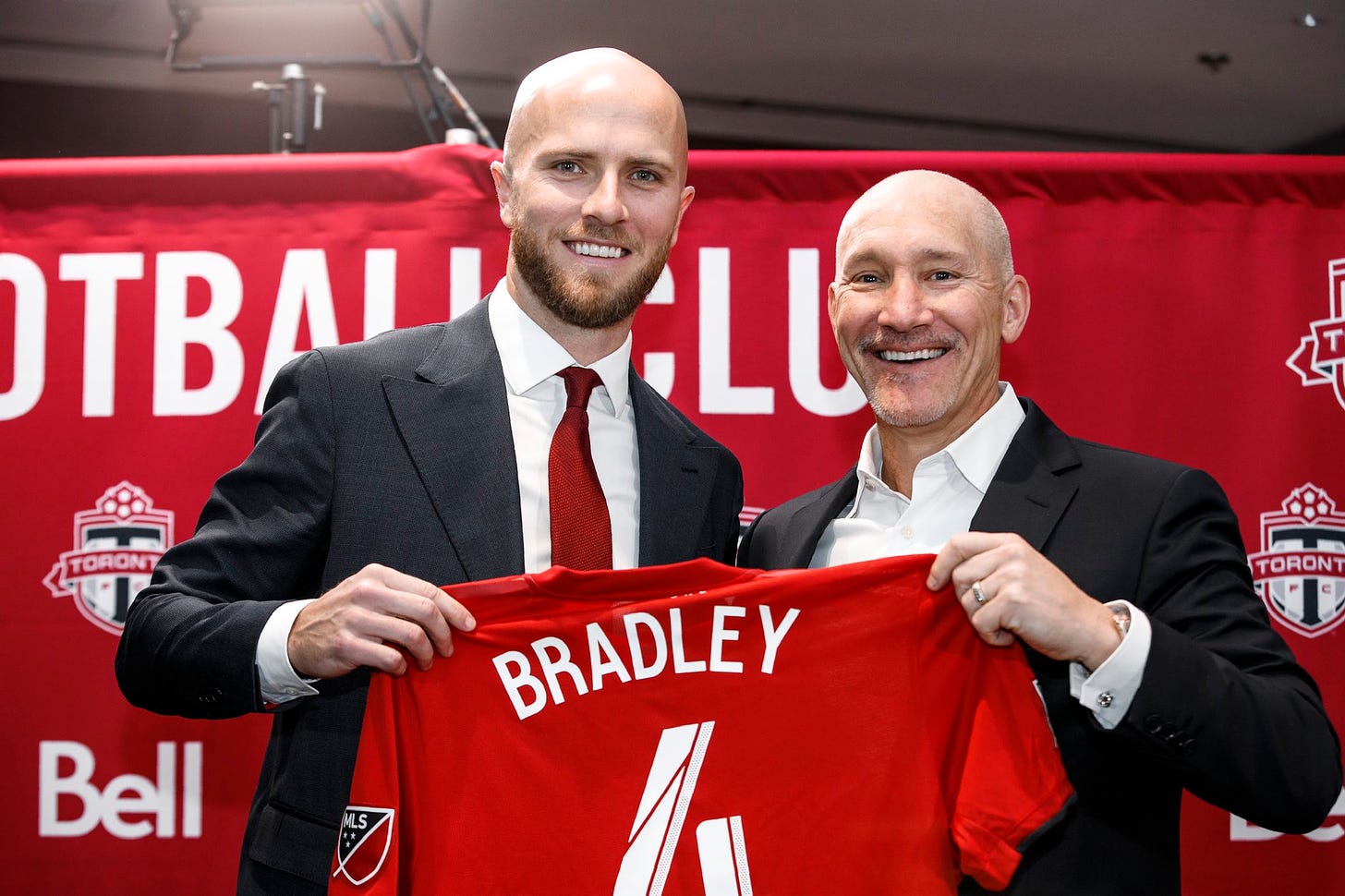The 2026 World Cup will mark the second time that the men’s World Cup will take place on American soil.
And it’s going to have a major impact across the sports ecosystem.
Some of what we’ll see:
- the emergence of new startups
- change in sponsorship spending
- an increase in US youth participation
- unique verticals built off of established companies
The 2026 World Cup will change the trajectory of not only soccer but the ENTIRE US sports ecosystem.

But I’m sure you’re thinking — “it’s more than 3 years away”.
Well, I’m seeing a lot of moves taking place NOW (that are geared toward 2026).
Let’s Dive In 👇
Looking Back at the 1994 World Cup
Upon winning the bid to host the 1994 World Cup, one journalist compared the decision to play on US soil as “holding a major skiing competition in an African country”.
But it was a no-brainer…
For football to truly be a global game, FIFA had to conquer its final frontier: the United States (it was a political decision).
And boy did it pay off…
The cumulative attendance broke the previous record by more than 1 million, and the average attendance for the 52-game tournament (68,991) also established a new mark.

But there’s something else you should know…
The 1994 tournament gave rise to the first U.S. soccer stars in players like Alexi Lalas, Cobi Jones, and Claudio Reyna — role models for future generations of American players.
The 1994 World Cup also left behind a legacy for soccer in the US:
- A surplus of approximately $50 million — more than double the original projections were contributed to the U.S. Soccer Foundation
- Improved training facilities
- renovated stadiums in World Cup communities
- turned a hands-to-mouth grassroots operation into a well-funded, well-run professional organization
And did you know that Major League Soccer (MLS) was the creation of the 1994 FIFA World Cup?
A Look At The MLS
Professional soccer is alive and well in America.
Any foreigner traveling to Atlanta, Charlotte, or Seattle would be impressed by the passionate and engaged fan bases.

But it wasn’t that way before the 1994 World Cup (frankly no pro league in America even existed).
The MLS was launched in 1996 with 10 teams (and has since expanded to 29 teams).
And research shows that there has been incredible growth in both participation and attendance across the US:
- Soccer is the 2nd most participated sport for Gen Z; 3rd for Millennials
- It’s one of the fastest-growing high school sports over the past 10 years
- Average MLS attendance is up 67% since 2012 (multiple teams are even selling out entire NFL stadiums)
- 46 million fans are interested in the MLS — with the majority (27 million) joining in the past 10 years
- youngest professional sports fan base in North America at an average age of 39.6 years
The average MLS club is valued at $550M (quickly approaching the NHL average of $865M).

At the current CAGR (compound annual growth rate), the average MLS club value will be worth more than the NHL average by 2026.
Something else to note…
The foreign-born population in the US is predicted to increase 51% by 2040.
I would be shocked if the MLS didn’t benefit from this trend (as many of these people will come from soccer-loving countries).
2026 World Cup Will Explode Growth
It is difficult to conceptualize the worldwide popularity of the World Cup.
The championship game is the #1 watched spectacle in the world (with over 2.5X the viewership of the Super Bowl).
In 2026, 64 games will be played in North America and attract over 4.5M attendees, thousands of viewing parties, and will be impossible to go unnoticed in your lives.

The MLS has reached a strategic inflection point and is poised for explosive growth.
This will have lasting impacts…
Illustrating What’s Coming
Let me give you a good example of just how far the MLS and US soccer has come.
Michael Bradley was making less than $36,000 when he left the MLS for a playing tour in Europe in 2024.
When he returned in 2014, he got $6.5 million to play with Toronto FC.

And when a league starts to win — better players emerge, money increases, big brands enter the space, and a massive gap is created for services/products to build in the space.
Add in the fact a 2026 World Cup is on the horizon — and things get exciting.
I’m already seeing it!
I had a fascinating conversation with a company in stealth about to attack the youth soccer space.
It’s co-founded by a USMNT legend and an early employee at GitHub (acquired by Microsoft for $7.5B)
As I keep saying, there are a lot of talented tech people entering the world of sports.
Here’s a look at some of the other major US soccer developments:
- CBS Sports is launching a 24/7 soccer streaming channel.
- MLS launched MLS Labs to help startups incubate and accelerate
- MLS partnered with TikTok to better connect with fans.
- NBA star Giannis Antetokounmpo joined the ownership group at Nashville SC.
- NBC Sports Next and US Youth Soccer (USYS) announced a new multi-year technology partnership to build online and mobile content.
- MLS signed a massive deal with Apple to stream games.
Soccer, particularly US soccer, is still in its early innings.
Looking Ahead
I know we’re several years away from the 2026 World Cup on North American soil, but the ramping-up is already happening.
The 1994 World Cup did more than just inspire a future national team.
Thirty years later it remains the most transformative event in U.S. soccer history!

The landscape is entirely different in the US today:
- 29 MLS teams
- Infrastructure for talented youth players
- Club + AAU/travel ecosystem
- Young star players (Christian Pulisic, Weston McKennie, Tyler Adams, etc)
The run-up to the 1994 US World Cup saw a 33% growth in interest in soccer.
With the explosive growth of the MLS, it would be conservative to predict a similar impact in 2026 — which would mean a minimum of 32M new fans of soccer in the U.S.

I could see the MLS becoming a top global soccer league before the next World Cup is hosted in America (which based on history would be in the year 2058).
And the last bit…
NOW would be a great time to build a soccer startup (or add a vertical to your already existing business).









